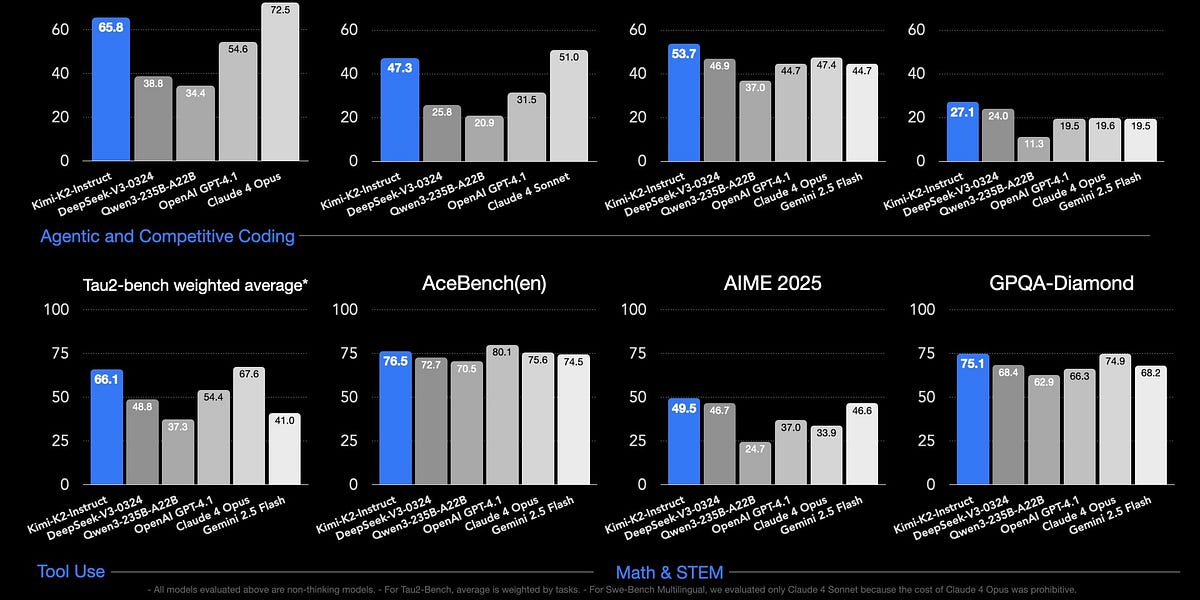Key Points
- Kimi K2 is an open-source AI model released by Chinese startup Moonshot AI
- Kimi K2 has outperformed leading models, including DeepSeek V3, on a variety of benchmarks
- The release of Kimi K2 has highlighted the growing gap between Western and Chinese AI research
- The best open model from an American company is arguably Llama-4-Maverick, but three Chinese organizations have released more useful models with more permissive licenses
- The release of Kimi K2 has highlighted the need for open science projects in the West
- The closed AI laboratories in the US are struggling to keep pace with the rapid progress being made in China

The image shows a series of bar graphs comparing the performance of different AI models across various benchmarks. There are 8 graphs arranged in two rows, each measuring different aspects like coding, tool use, and mathematical ability. The bars are colored in blue for the first model and grayscale for others. Each graph shows percentage scores on the y-axis (0-100) and model names on the x-axis.

A simple geometric design showing the letter ‘T’ formed by light blue or cyan colored lines on a white background. The lines appear to be drawn in a technical or architectural style, with straight edges and clean intersections. The vertical and horizontal strokes of the T are created using parallel lines that give it a structured, blueprint-like quality.
Kimi K2: A New Frontier in AI Research
The release of Kimi K2, an open-source AI model by Chinese startup Moonshot AI, has sent shockwaves through the AI research community. Kimi K2 has been described as an “Open-Source Agentic Model” with 1T total parameters and 32B active parameters, making it a significant player in the field of AI research.
Kimi K2 has outperformed leading models, including DeepSeek V3, on a variety of benchmarks, including SWE-Bench, LiveCodeBench, AIME, and GPQA. This has raised concerns about the West’s ability to keep pace with AI research and development, particularly in the area of open models.
The Gap Between Western and Chinese AI Research
The release of Kimi K2 has highlighted the growing gap between Western and Chinese AI research. While Western companies such as OpenAI, Anthropic, and Google have been at the forefront of AI research, Chinese companies such as Moonshot AI, DeepSeek, and Qwen are quickly catching up.
The best open model from an American company is arguably Llama-4-Maverick, but three Chinese organizations have released more useful models with more permissive licenses. This has significant implications for the future of AI research and development, particularly in the area of open models.
The Need for Open Science Projects
The release of Kimi K2 has also highlighted the need for open science projects in the West. The closed AI laboratories in the US are struggling to keep pace with the rapid progress being made in China, and there is a growing need for funding and support for open science projects.
As the AI research landscape continues to evolve, it is clear that the West needs to rethink its approach to AI research and development. The release of Kimi K2 is a wake-up call for the Western AI research community, and it is hoped that it will spark a renewed focus on open science projects and collaboration.
Source: interconnects.ai
